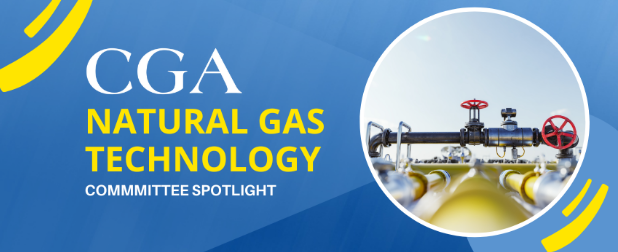Committee Spotlight: CGA Natural Gas Technology Committee
JULY 27, 2022
Supporting a Growing Industry
In recent years, the use of compressed natural gas (CNG) and liquefied natural gas (LNG) has rapidly grown as a fuel source for electricity generation, heating, transportation, and more.
As the CNG/LNG industry has grown to meet demand, CGA and its members worked quickly to create safety standards addressing production, storage, transport, safe handling, and disposal. Established in 2013, CGA’s Natural Gas Technology Committee has a mission to:
- Promote safe practices related to the handling, supply, and transportation of natural gas.
- Address issues concerning the design, installation, and operation of natural gas supply systems.
- Develop, publish, and promote domestic and international standards and guidelines containing technical information and recommendations for safe, effective, and environmentally responsible practices.
- Coordinate its activity with other CGA technical committees.
Setting the Standard for Natural Gas Safety
The committee has developed a suite of consensus-based publications to provide safety guidance in several critical areas, including::
CGA G-19 provides general information about the properties, transportation, storage, handling, and use of LNG and CNG. It covers the hazards and safeguards associated with natural gas and gives readers best practices for safe use and handling of natural gas.
CGA G-19.1 provides requirements for the design, installation, maintenance, and removal of LNG and CNG supply systems. It provides material on the site selection, design, installation, start-up, operation, and maintenance of natural gas supply systems.
CGA G-19.2 provides requirements for the safe transfer and transportation of LNG and CNG. The requirements apply to filling the transport vehicle, moving the transport vehicle to the customer facility, and filling the customer supply system from the transport vehicle.
CGA G-19.3 provides best practices for putting into natural gas service equipment which had been in industrial gas service such as oxygen, nitrogen, argon, hydrogen, or helium. This standard does not deal with the reverse process – putting into industrial gas service equipment that was previously in natural gas service.
CGA G-19.4 provides a methodology to calculate the maximum required impoundment area for LNG storage systems to contain spills.
Addressing Emerging Priorities
As the CNG/LNG market evolves, CGA’s committee is taking a leading role in developing new standards to support the continuous improvement of safety in this space. Current work efforts include:
- drafting a new publication for the design and fabrication of natural gas tube trailers utilizing composite overwrap pressure vessels (COPV);
- identifying gaps on topics such as renewable natural gas and biogas and determining whether to update the committee’s existing publications or develop new publications;
- developing a standard on a high-pressure tube trailer connection for natural gas; and
- supporting the CGA Safety and Health Committee’s work to develop a new standard on the filling of tubes and tube trailers with certain liquefied and non-liquefied nonflammable and flammable industrial, medical, and food gases.
Committee members also participated on an ad hoc code committee (AHCC), which is managed by CGA’s Hazardous Materials Codes Committee, to develop and submit comments to revise the 2019 edition of NFPA 59A, Standard for the Production, Storage, and Handling of Liquefied Natural Gas (LNG). They will continue to participate when the revision cycle for NFPA 59A (2023) opens.
Ready to Get Involved?
CGA’s Natural Gas Technology Committee would welcome additional members to work on current publications and projects as well as to help develop new work to benefit the natural gas industry. If interested or for more information about the committee, contact the committee’s administrator, Jill Thompson, at jthompson@cganet.com.
Founded in 1913, the Compressed Gas Association (CGA) is dedicated to the development and promotion of safety standards and safe practices in the industrial, medical, and food gases industry. CGA represents more than 110 member companies including manufacturers, distributors, suppliers, and transporters of gases, cryogenic liquids, and related products and services. Through a committee system, CGA develops technical specifications, safety standards, and training and educational materials, and works with government agencies to formulate and promote compliance with responsible regulations and standards.
Press Contact:
Paul Pflieger
ppflieger@cganet.com
703.788.2700


